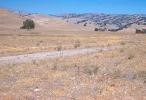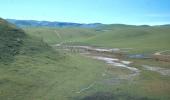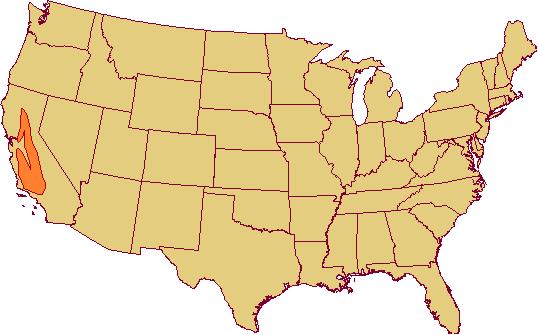

 California Annual Grasslands
California Annual Grasslands
Once a cool-season perennial grassland, the area in the Central Valley of California is dominated today by annual grasses and legumes. The area is bounded on the east by the Sierra-Cascade Mountains, and on the west by the California Coast Ranges. The topography is one of rolling hills and level valleys.
Climate. The California Annual Grassland area has hot, dry summers and mild, moist winters. The frost-free season is from 250-300 days, but drouth restricts growth in summer. The normal green forage period is from February to May. Winter type precipitation varies from 15 to 23 centimeters in the upper San Joaquin Valley to 65 or 75 centimeters along coastal valleys and up to 100 centimeters in the upper Sacramento Valley. The season of maximum rainfall is December through February and, therefore, the season of greatest growth of the annual forage is February through May. The amount of winter growth depends on the amount of rain received and its timeliness.
Soils. The soils of this area are primarily entisols and alfisols, most with a dark brown to black surface color. The entisols are situated in the valley floor with alfisols at slightly higher elevation. These soils have a high inherent fertility and are well drained.
Vegetation. The climax was originally dominated by cool-season, perennial bunchgrasses. The area was shut off from the other prairies for ages, but once was apparently connected with the desert plains grassland association from which it is now separated by the Sierra Nevada Mountains and the Mojave Desert. In southern California are found relicts of Bouteloua, Andropogon, Hilaria, and Aristida, and in the desert plains association are found relicts of California species such as Stipa pulchra and S. speciosa, while in the mountains adjacent to Death Valley are found relicts of grasses, forbs, and shrubs of both types. The chief dominant among these bunchgrasses was California needlegrass (Stipa pulchra) which is a meter or more tall with large nodding panicles. Other dominants include S. lopoda, S. coronata, and S. speciosa. Other important species: Melica imperfecta, E. condensatus, M. hartfordii , E. sitanion, Elymus triticoides, Koeleria cristata, and E. glauca. Annuals now dominate the area with wild oats (Avena fatua) the primary species. Annual bromes (Bromus sp.), annual barleys (Hordeum sp.) and annual fescues (Festuca sp.) make up the remainder of the annual grass complement. Introduced annual forbs - California burclover (Medicago hispida), filaree (Erodium cicutarium), and Erodium botrys are important forage species. There are three rather distinct plant growth periods:
Management. The chief range animals are cattle. Many are maintained on the range in summer, but to accomplish this requires liberal use of protein and energy supplements. Stocks may be moved into high mountain ranges from June to October, or brought to irrigated pastures in the valleys. Moderate grazing of the foothill annual-type range of California gives heavier cattle than close grazing, brings about a more desirable mixture of plant species, produces grazing 2 to 3 weeks earlier and maintains soil fertility better. Heavy grazing produces a small, stunted forage crop. Light stocking is beneficial in improving depleted range, but it allows undesirable species to increase on good range.